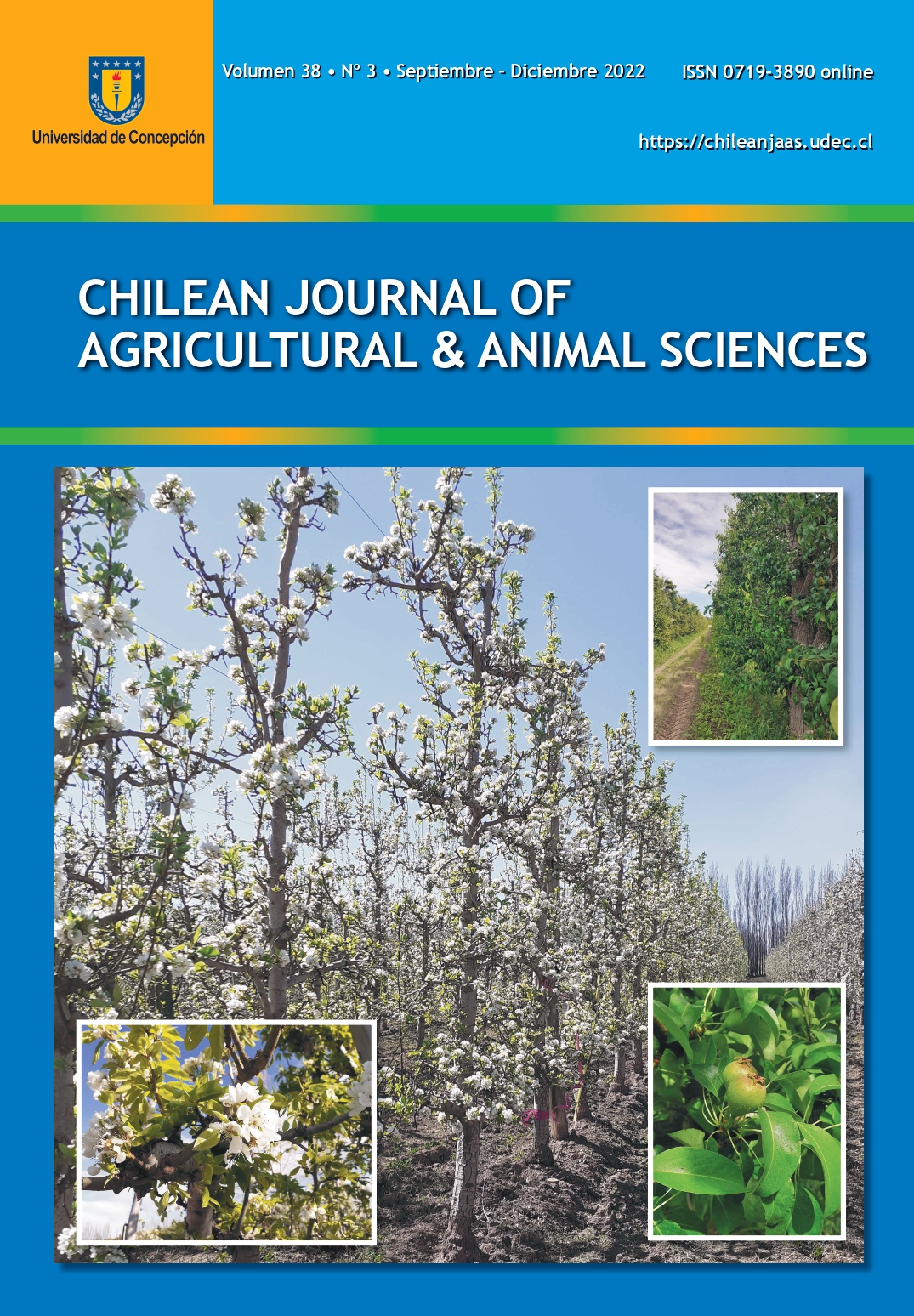EARLY INFECTIONS BY Botrytis cinerea AND Alternaria spp. AND THEIR RELATIONSHIP WITH POSTHARVEST ROT IN D’ANJOU PEAR
DOI:
https://doi.org/10.29393/CHJAA38-30JUBF10030Abstract
Postharvest rot of fruit due to injury has been extensively studied, but there is scarce information
about rot caused by latent infections. Botrytis cinerea and Alternaria spp. produce infections at early stages of fruit development of pear cv. ’d’Anjou’, causing significant losses in the Alto Valle de Río Negro, Argentina. Research objectives have included evaluation of the susceptibility of floral organs/fruits to infections produced by the artificial inoculation (ALI) of B. cinerea and A. alternata, evaluation of the occurrence of natural latent fungal infections (NLI) during fruit development and growth, and study of the relationship between early latent infections by B. cinerea and Alternaria spp. on the incidence of rot and mold in the fruit calyx and stem, and the physiological characteristics of the fruit during cold storage. The study was conducted in a commercial ‘d’Anjou’ pear orchard during the 2018/19 and 2019/20 seasons. The occurrence of NLI was determined at full blossom (FB), petal fall (PF), 30 days after full blossom (DFB), 60 DFB and 120 DFB (pre-harvest), while susceptibility of the different organs was evaluated from FB to 60 DFB. Frequency of NLI and ALI was determined by dissection and in vitro isolation. The postharvest physiological conditions of the fruit, incidence of NLI, and incidence of mold and rot were studied up to 120 days of cold storage and after 7 days of shelf life. Despite the variability between seasons, fungal infections occurred at FB and PF, being severe in the calix and stem at 60 and 120 DFB. NLI had a high incidence at postharvest. However, calix-end rot by B. cinerea did not exceed 2.5% in the season with precipitations and high RH during spring. In addition, Alternaria rot reached 0.5%, while stem mold increased significantly after 90 days of cold storage. At this moment, fruit significantly reduced its relative water content and firmness.
Downloads
Published
How to Cite
Issue
Section
Copyright (c) 2022 Carla Nahir Basso, Maria Cristina Sosa, María Cecilia Lutz

This work is licensed under a Creative Commons Attribution 4.0 International License.







